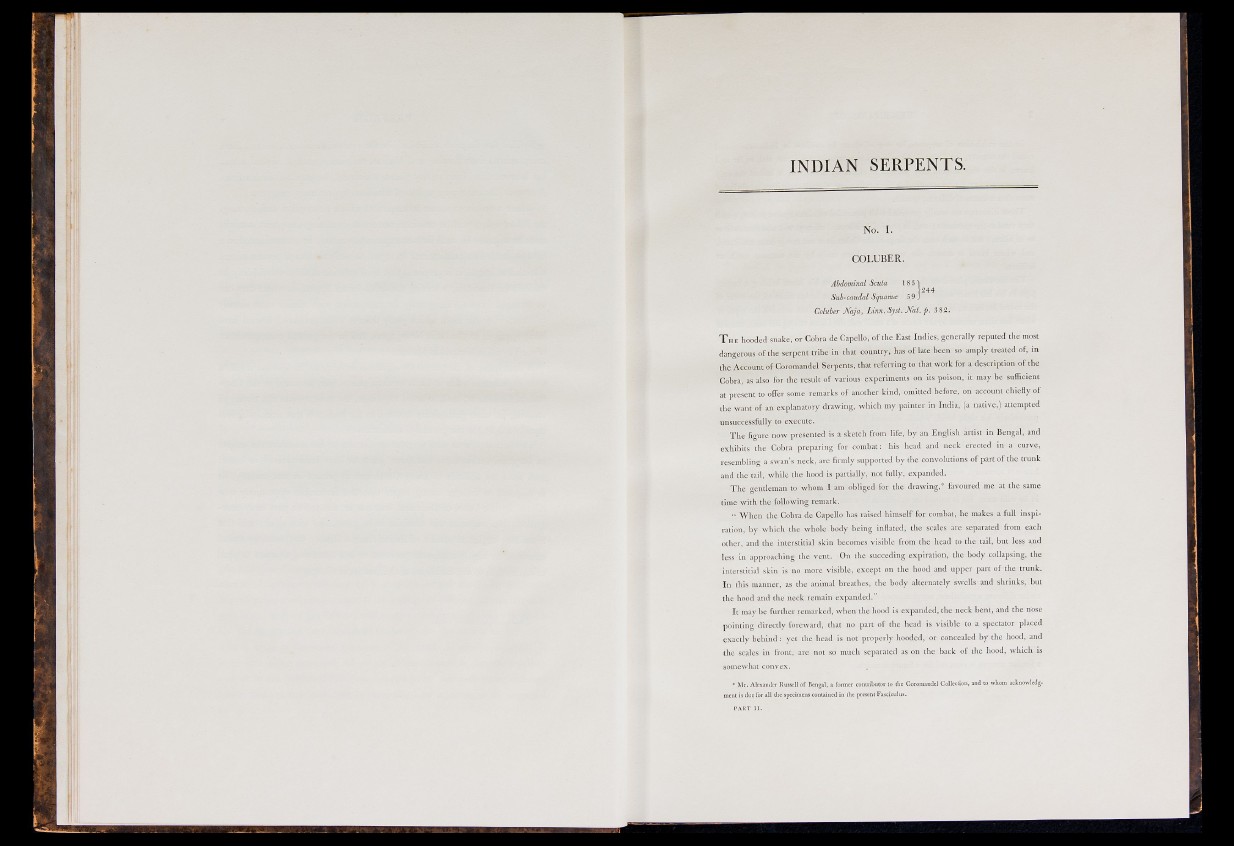
INDIAN SERPENTS.
No. I.
COLUBER.
Abdominal Sada 18 51
2 4 4
Sub-caudal Squama: 5 9 J
Gohtber Mja, Linn. Syst. Nat. p. 3 82.
THE hooded snake, or Cobra de Capello, of the East Indies, generally reputed the most
dangerous of the serpent tribe in that country, has of late been so amply treated of, in
the Account of Coromandel Serpents, that referring to that work for a description of the
Cobra, as also for the result of various experiments on its poison, it may be sufficient
at present to offer some remarks of another kind, omitted before, on account chiefly of
the want of an explanatory drawing, which my painter in India, (a native,) attempted
unsuccessfully to execute.
The figure now presented is a sketch from life, by an English artist in Bengal, and
exhibits the Cobra preparing for combat: his head and neck erected in a curve,
resembling a swan's neck, are firmly supported by the convolutions of part of the trunk
and the tail, while the hood is partially, not fully, expanded.
The gentleman to whom I am obliged for the drawing,* favoured me at the same
time with the following remark.
" When the Cobra de Capello has raised himself for combat, he makes a full inspiration,
by which the whole body being inflated, the scales are separated from each
other, and the interstitial skin becomes visible from the head to the tail, but less and
less in approaching the vent. On the succeding expiration, the body collapsing, the
interstitial skin is no more visible, except on the hood and upper part of the trunk.
I n this manner, as the animal breathes, the body alternately swells and shrinks, but
the hood and the neck remain expanded."
It may be further remarked, when the hood is expanded, the neck bent, and the nose
pointing directly foreward, that no part of the head is visible to a spectator placed
exactly behind : yet the head is not properly hooded, or concealed by the hood, and
the scales in front, are not so much separated as on the back of the hood, which is
somewhat coirvex.
* Mr. Alexander Russell of Bengal, a former conlrrbutor to the Coromandel Collection, and to whom acknowledgment
is dne for all the specimens contained in the present Fasciculus.